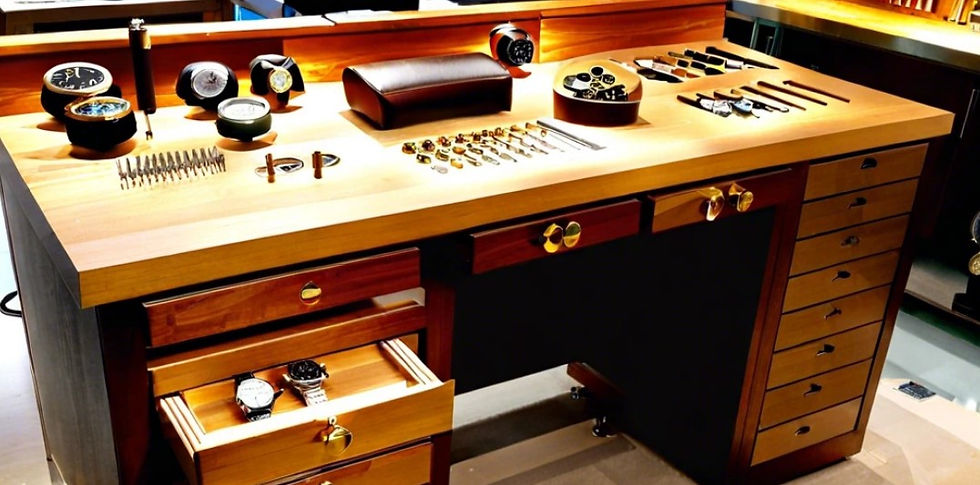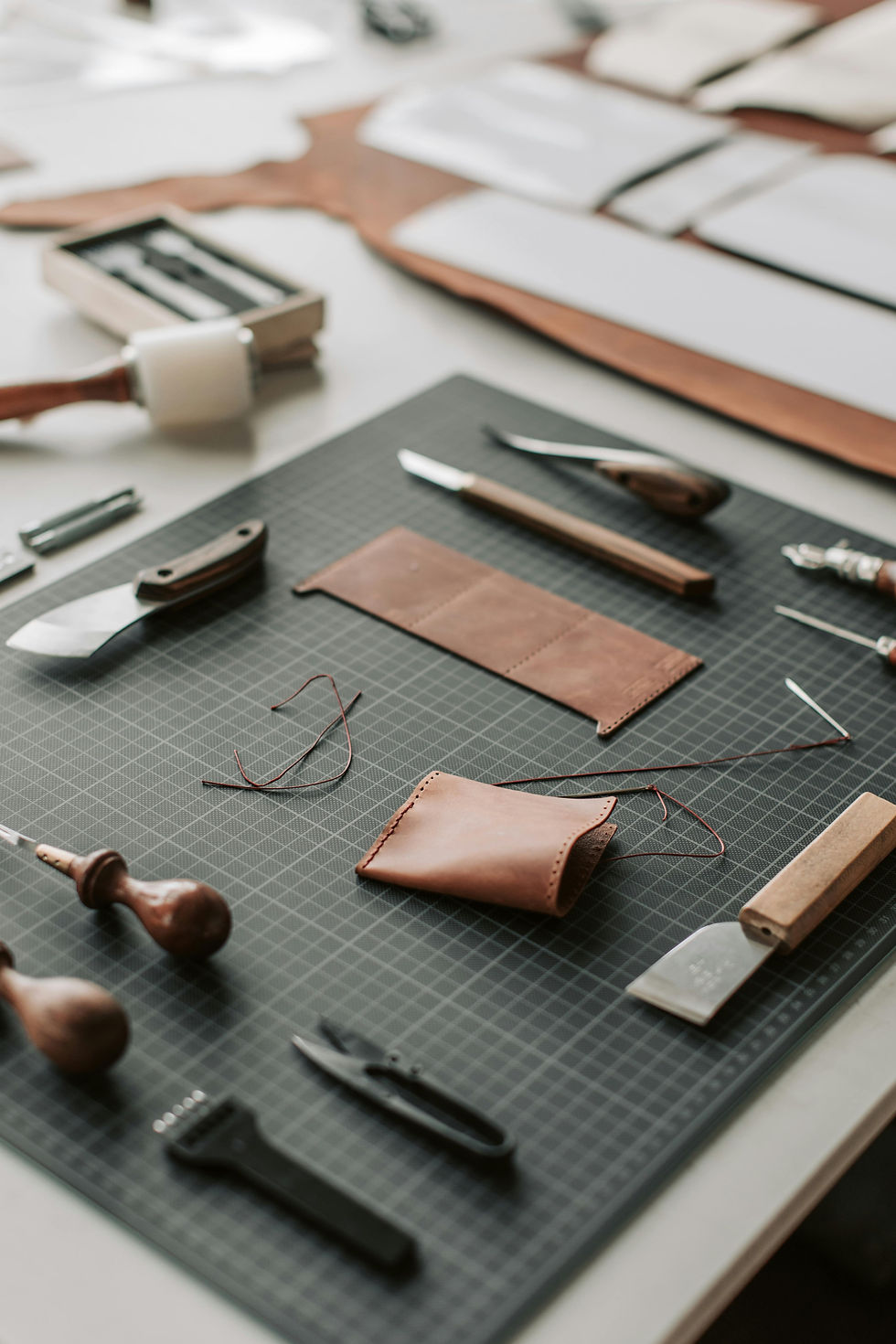Essential Tools for Your Watchmaking Journey
- Naveen Chand
- Aug 26
- 4 min read
If you’ve ever found yourself staring at your watch, wondering how to fix a tiny scratch or replace a battery, you’re not alone. I’ve been there too. The world of watch repair can seem intimidating at first, but with the right tools, it becomes a fascinating and rewarding hobby. Whether you want to save money or simply enjoy the satisfaction of fixing your own timepieces, having a solid toolkit is essential.
In this post, I’ll walk you through the must-have tools for watch repair. I’ll share what I’ve learned from my own watchmaking journey, including practical tips and recommendations. Let’s dive in!
Why Having the Right Tools Matters
Before we get into the list, let me say this: quality matters. You don’t need to spend a fortune, but cheap, flimsy tools will only frustrate you. Good tools make the job easier and protect your watch from damage.
Think of it like cooking. You wouldn’t try to chop vegetables with a dull knife, right? The same goes for watch repair. The right tools give you precision and control.
Here’s what you’ll need to get started:
Screwdrivers designed for tiny screws
Tweezers with fine tips
Case openers for different watch backs
A loupe or magnifying glass
Spring bar tools for straps and bracelets
I’ll explain each in detail below.

Precision screwdrivers are the backbone of any watch repair toolkit.
Essential Tools for Watch Repair: What You Need and Why
1. Screwdrivers
Watch screws are tiny and delicate. Using the wrong screwdriver can strip the heads or slip and scratch your watch. Invest in a set of high-quality watchmaker screwdrivers with various sizes. Brands like Bergeon or Horotec are popular, but there are affordable options that work well too.
Look for:
Flat tips that fit snugly into screw heads
Comfortable handles for better grip
Magnetic tips to hold screws in place
2. Tweezers
Tweezers help you handle small parts like screws, springs, and gears. I prefer stainless steel tweezers with fine, non-magnetic tips. Avoid cheap plastic ones—they can bend or break easily.
Pro tip: Have a few pairs with different tip shapes (straight, curved) for different tasks.
3. Case Openers
Opening the watch case is often the first step in any repair. There are several types:
Case knife for snap-back cases
Adjustable case wrench for screw-back cases
Ball case opener for stubborn screw backs
Make sure you know your watch’s case type before buying a tool. Using the wrong opener can damage the case or seals.
4. Loupe or Magnifying Glass
You’ll need to see tiny parts clearly. A loupe with 3x to 5x magnification is ideal. It fits over one eye and leaves your hands free. Some loupes come with built-in LED lights, which is a bonus.
5. Spring Bar Tool
Changing straps or bracelets requires a spring bar tool. It has a forked end to compress the spring bars holding the strap in place. This tool makes strap changes quick and safe.
Who are the big 3 in watchmaking?
When diving deeper into watch repair and appreciation, it’s impossible not to mention the giants of the industry. The "big 3" are Rolex, Patek Philippe, and Audemars Piguet. These brands set the standard for craftsmanship, innovation, and design.
Rolex is known for its robust, reliable watches and iconic designs.
Patek Philippe represents the pinnacle of haute horlogerie with intricate complications.
Audemars Piguet is famous for its Royal Oak, a game-changer in luxury sports watches.
Understanding these brands helps you appreciate the complexity behind watchmaking and why certain tools and techniques are necessary. Even if you don’t own one, their influence shapes the entire watch repair world.

The big 3 brands inspire many watch enthusiasts and repairers alike.
Additional Tools That Make Life Easier
Once you have the basics, you might want to expand your toolkit. Here are some extras that I found incredibly useful:
Movement holder: Keeps the watch movement steady while you work on it.
Dust blower: Removes dust without touching delicate parts.
Watch hand remover and installer: For safely removing and placing watch hands.
Cleaning cloths and solution: To keep your watch sparkling clean.
Watch press: Helps close snap-back cases without damaging the watch.
These tools aren’t mandatory at the start but will improve your efficiency and results as you gain confidence.
Tips for Building Your Toolkit on a Budget
I get it. Not everyone can drop a lot of money on tools right away. Here’s how I started without breaking the bank:
Buy a starter kit: Many brands offer beginner kits with essential tools at a reasonable price.
Prioritize quality over quantity: It’s better to have a few good tools than a bunch of cheap ones.
Look for second-hand tools: Watch forums and marketplaces often have gently used tools.
Practice patience: Learning watch repair takes time. Don’t rush to buy everything at once.
Remember, your toolkit will grow as your skills improve. The key is to start with the essentials and build from there.
Embracing the Watchmaking Journey
Starting your own watchmaking journey is exciting. It’s a blend of art, science, and patience. With the right tools, you’ll find yourself more confident tackling repairs and maintenance.
Every scratch you buff out, every battery you replace, and every strap you swap is a small victory. And the best part? You’re saving money and gaining a skill that connects you to centuries of horological tradition.
So, gather your tools, set up a clean workspace, and enjoy the process. Your watches will thank you.

An organized workspace makes watch repair more enjoyable and efficient.
Keep Learning and Sharing
Watch repair is a lifelong learning process. New tools, techniques, and watch models keep things interesting. Don’t hesitate to join online communities, watch tutorials, and read up on horology.
Sharing your experiences helps others and deepens your own understanding. At Apkx Watches, we’re passionate about growing this community and providing affordable, reliable watch care.
Happy repairing!




Comments